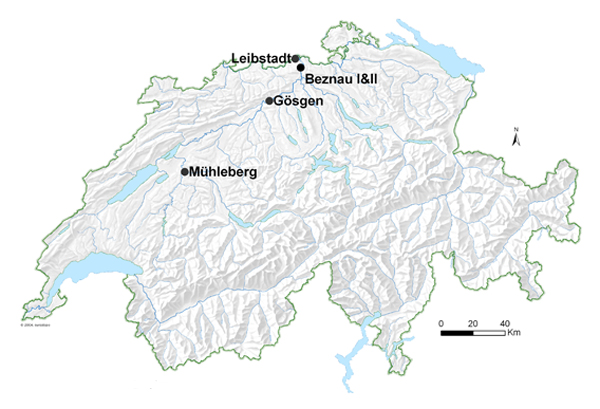
Results published on july 12th 2011
Link to press release: PDF
Link to publication in International Journal of Epidemiology: HTML / PDF
Manuscript: DYR115
DOI: 10.1093/ije/DYR115
Background
During the last 20 years several studies have addressed the question whether people living in the vicinity of nuclear power plants are exposed to health risks. One focus of these investigations has been childhood cancer, since children are more susceptible to ionizing radiation than adults. Some studies have found an association with childhood cancer, which is difficult to explain because emissions from nuclear power plants during normal operation are low in comparison to the annual background exposure.
For the first time, a nationwide study will be conducted in Switzerland by the Department of Social and Preventive Medicine of the University of Bern to examine the question if residence close to a nuclear power plant is associated with an increased risk of childhood cancer (CANUPIS study: Childhood Cancer and Nuclear Power Plants in Switzerland).
Findings from the German study
Published in December 2007, a study from Germany reported an increased risk of cancer in children living 5 kilometers or closer to a nuclear power plant. This was particularly pronounced for leukemia in children aged less than 5 years. The results from the German KiKK study (“Epidemiologische Studie zu Kinderkrebs in der Umgebung von Kern-Kraftwerken”) are available on the homepage of the German Childhood Cancer Registry.
Situation in Switzerland
Switzerland has five nuclear power plants (Beznau I und II, Mühleberg, Gösgen und Leibstadt, see map), which generate about 40% of the electricity in Switzerland. About 1% of the Swiss population of 7.5 million lives within 5 km of a nuclear power plant and approximately 10% live within 15 km.

Map: Localisation of nuclear power plants in Switzerland

